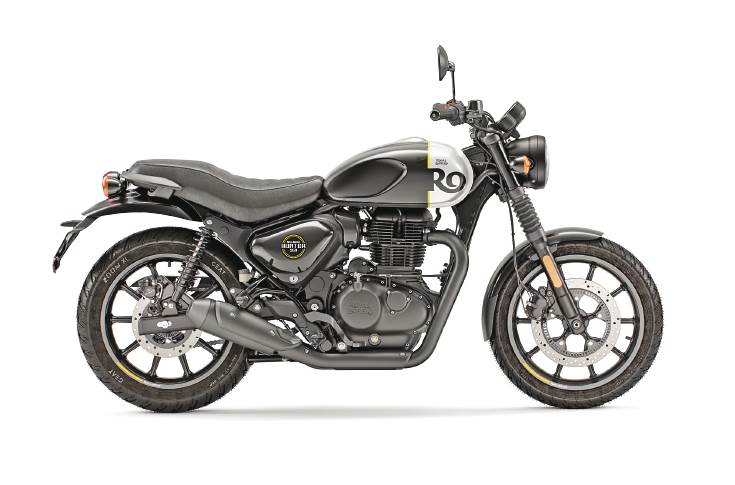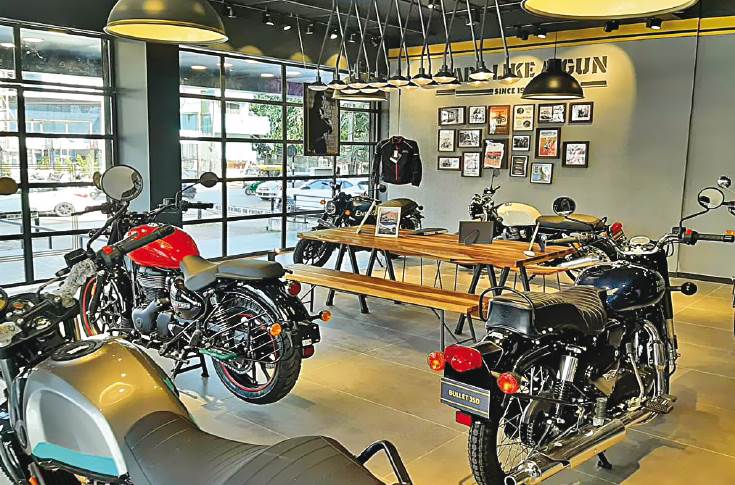As new global competition embarks on their India journey, Royal Enfield, the undisputed, mid-size motorcycle leader is spreading wings globally and in turn will challenge the likes of Harley-Davidson and Triumph in their own home turf. With the highest ever annual capex, the maker of the fabled Bullet motorcycle is readying itself for a product onslaught. In an interview to Autocar Professional, B Govindarajan, the CEO of Royal Enfield says, the company is not perturbed and is instead focusing on its own path of adding new products and new markets to reinforce its leadership in the global mid-size market.
It has been a remarkable decade for RE, how do you see the journey so far?
Royal Enfield brand is at the centre of everything that we do. It has been an all-round success story of product, technology, quality, supply chain and distribution network.
We have got these tenets in place to deliver a pure motorcycling experience. Our philosophy is — less is more. We do a few things, but we do it very well.
From 2011 to 2018, it was an outstanding growth story, followed by a challenge between 2019-2020. But, we reset ourselves and used the time to prepare for the next decade beyond the UCE architecture.
A lot of companies were struggling to transition to new emission norms. At RE, we were running and also changing shoes at the same time.
We managed the transition well and that helped us in a strong market outperformance.
One was transitioning to new norms, but there was a strong emphasis on pushing boundaries globally and also catering to the Indian audience, right?
Yes. The ‘P’ platform and the twin-cylinder bike was a critical starting point in our globalisation plan. It had to stay true to RE’s character of delivering a pure motorcycling experience.
We had to get it right. When we landed the Continental GT and Interceptor 650 — the verdict was unanimous — Royal Enfield had learnt the art of producing the best motorcycles.
The next decade for Royal Enfield is to expand into the global arena. The twin models were followed by the ‘J’ platform Meteor across the globe. It is an easy cruiser bike that has the right kind of refinement level, not too much, yet enough to retain the fundamental connection between man machine and the terrain.
It was very well accepted and lapped up quickly as an entry-level cruiser model in markets like North America. Then we came up with Classic reborn which actually landed very well because of digital marketing.
While defining our product portfolio and during the research phase we discovered that there are a lot of Royal Enfield lovers, but they are not turning into our owners. We tried to find out is it the price, is it the form factor, it is too intimidating, what is it that India’s youth wants?
 The arrival of the Hunter did wonders for the brand in attracting a new genre of enthusiasts.
The arrival of the Hunter did wonders for the brand in attracting a new genre of enthusiasts.
So that’s how the Hunter was born and the bike is compact, agile and tightly packaged and that caught the fancy of young buyers. It has become a big hit with the younger target audience. It brought us a new set of buyers that never bought an RE before.
And that has helped us expand our market share significantly. Our domestic market share is about 7-8 percent and in the premium motorcycle segment (125 cc and above), we have almost 32-33 percent share.
Does that mean you are ahead of Bajaj Auto for the first time?
It happens back and forth, but more importantly, we are focused on our path. In the middleweight category (350 to 750 cc) we comprise almost 90 percent of the Indian market. There are many new players coming, but we are not worried, we are focusing on our plans.
We said let’s develop products that are true to the Royal Enfield DNA and there is a big pipeline. We said, let’s go back to our community, connect with them, ride with them, create that pure motorcycling experience, that is what has helped us in the past and we will continue to rely on creating new rides and experiences to build the community, buyers will come.
Post Covid-19, the market opened up, and it is poised to have a strong growth cycle now. We are looking at all the enablers which are required to make the brand more accessible. We are going close to them with studio stores, we are making finance available, creating a digit finance market place to ensure that Royal Enfield is a very accessible brand.
With costs moving up, there was pressure to increase prices, but we absorbed it and said we need to ensure that the products should be accessible to consumers and price should not be a barrier.
What’s on the globalisation plan?
Yes, earlier we said we will go to one country, open one shop, give the experience, and build the community. That is how we wanted to approach the global plan.
The strategy helped. We have had tremendous growth. We are almost crossing 100,000 motorcycles outside India.
 Lifestyle and savvy digital marketing efforts have played a big role in enhancing the brand image of Royal Enfield in India and overseas markets.
Lifestyle and savvy digital marketing efforts have played a big role in enhancing the brand image of Royal Enfield in India and overseas markets.
But it’s just the beginning. We have built a community of 15,000 riders in Europe — the volumes and market share has followed; we are 10 percent of the mid-size motorcycle segment.
We are already witnessing scale in North America, in the middle-weight category our market share is at almost 8.1 percent. In the APAC region we are almost 8.5 percent.
We have over 1,000 outlets globally. Because we are committed to long term growth, we have started setting up our own subsidiaries in US, Latam and APAC region. In the UK we are taking over even the distributorship. In all these markets, we are posting our own teams to understand the ground realities and help build international markets.
With inflation hitting a crisis proportion globally, does that put Royal Enfield in a sweet spot?
Yes, it’s true. From a manufacturing perspective, the inflation level is relatively under control and the cost levels too are lower, which gives us a cost advantage. Since ours is a very accessible motorcycle the global inflationary challenges do not pose a major risk to us. From the cost side, we are relatively insulated, from a pricing point of view, we are more competitive.
RE Volumes have remained around 8.5 lakh units annually, where is the next wave of growth likely to come from?
We are a long-term aggressive company. In the short term, you do give up on some gains, but that’s okay with us. That’s why you see that we offer zero discounts on products.
We want our consumers to enjoy the way we want to connect (how we have been doing so currently), and that is what is helping. Our ambition is not driven by topline numbers. Our ambition is more driven by the community. And what drives us is not the profit and profitability. But for us, it’s a byproduct. But what runs within us is a motorcycle, designing a lovely motorcycle for the community. And giving them that experience is what really drives us. And that’s why we are more profitable and the best company. Passion actually drives us.
You will see more exciting models coming from us at the right time.
While Hunter has brought in incremental business, it has cannibalised the most successful nameplate the Classic, is that why you are calibrating the new launches?
Classic was the perfect product for the upgraders or that is where the majority of the buyers used to come when the prices had not shot up significantly.
The Classic numbers are lower. It’s true, that is the reality, but the overall sales for me have grown, new products like Hunter have brought in new incremental buyers. The profile of buyers is very different.
My Classic buyer is a salaried individual – whose income has been under pressure, his discretionary spends have gone down, whereas the Hunter buyer is a college going youngster whose father pays for his motorcycle.
But I am sure, as the market opens up, Classic buyers will come back and the Hunter segment too, will grow.
How do you see Royal Enfield evolving its game plan in the next two to three years?
You will be looking at Royal Enfield as a global consumer brand, and we will be a leader in the middle weight segment.
You already are the leader, aren’t you? How do you see ICE and EV evolution for premium motorcycles?
Being a leader is not easy. You have to be fit. A lot of new rivals are coming in. An organisation — our size, needs to be agile, even as we are grow.
International markets are very dear to us, so what we are doing now is that we have actually commissioned a separate team to start looking at every country of CKD. If we make a product in the country then and there, then consumers relate to you faster. That’s why with our subsidiaries we have CKD operations in Argentina, Colombia, Brazil and Thailand. We have also signed up Bangladesh and Nepal now. We are committed to building that motorcycle culture across the globe.
As for EVs, we have been very open that we are not going to be the front runners in bringing EV technology. Even today I can tell you, for a consumer to take a decision purely on a cost of ownership basis especially for a motorcycle, he can’t decide it on a TCO basis. Because the cost of aggregates of the batteries and motors, BMS systems is very high.
The costs will come down over a period of time. I’ve been going through the business cases and trying to understand when the transition will take place. What is important for us is that we are ready to transition smoothly.
ICE premiumisation will continue till at least 2030. And it can grow at a pace of almost six to eight percent and we are prepared to capture the growth.
That is my core right now, I have to really keep it tight and then keep running and growing.
Can you shed some light on your EV plans?
At Vallam, we have marked a space for EVs for the future, so we will be ready with the EV line when we launch our product in 2025. EV is like a startup. We are putting the team together on the core EV technology as a separate vertical. The EV team is in place and they have started working like a startup, because their mentality has to be correct. The technology is changing fast so your routine decisions have to be taken at a faster pace.
Say, if I have to run a programme management review of an IC. Once in 30 days, I’ll be running one for EVs every seven days. However, there will be a strong complementarity between the ICE and EV team. Wherever the chassis or lightings or electricals, ride handling is concerned, our ICE team has a better understanding and will contribute significantly. We are bringing in the best resources and adapting them into the EV team.
This interview was first published in Autocar Professional’s July 1, 2023 issue.


